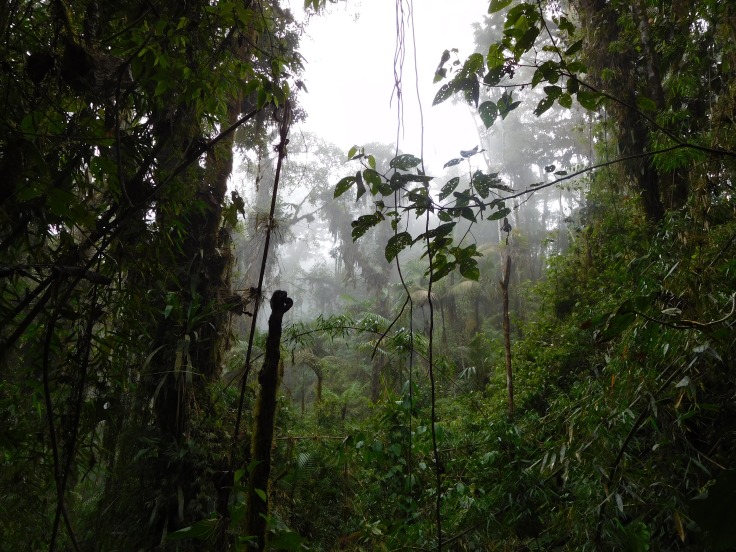My first impression of Ecuador was the greenness of everything. Green was like a liquid filling the world, I breathed green, I smelled and tasted it. The animals living in the forest lived it and moved through its depths, full of vibrancy.
I only spent 10 days total in the country. The first few days my group traveled into the cloud forest, high in the Andes. 
The first few days were spent hiking, identifying different birds and talking to the local guides about conservation.

Conservation, according to Richard (the owner of the lodge we stayed at), is improving in the cloud forest of Ecuador. In the past, the government supported clear-cutting the forest to make space for cash crops or cattle farming. Now, people are using tourism as a route to protect the forest ~ buy some land, build a lodge, and invite tourists. The land, meanwhile, is allowed to remain for the most part in its natural state.


We spent a fair amount of time around the hummingbird feeders, where dozens of the tiny birds buzzed and fluttered constantly. They’d alight on your hand if you held out a red cup of sugar-water ~ red, because they are attracted to that color. This explains the rouge of flowers pollinated by hummingbirds.
We drove back to Quito then flew to Coca, a town created directly because of the oil industry in Ecuador. From Coca we took a small motorized canoe to the Manatee, the boat we’d spend the next few days on. We were now in the Amazon basin, on the Napo river. The temperature was hot and the air humid, and the world opened up to the bluest sky.

We left the Manatee each day on the canoes, spending hours upon hours exploring the edges of the river, winding through the rainforest. We met a few of the local Kichwa people, who are now heavily involved in tourism and often find jobs with oil industry in the Amazon basin.
One of our guides, Raul, explained the situation with local indigenous groups. Most are “uncontacted,” he said. These groups are protected by the government and are to remain uncontacted and given enough land for this to be possible. Thus oil companies are barred from encroaching on these lands, although from what I understood the oil companies themselves are responsible for determining which lands these are. The Kichwa people were uncontacted before oil industry entered Ecuador ~ many of their communities on the banks of the river were formed in order to work in the industry. Raul explained that the oil companies are often the source of income for Kichwa people ~ it is that, or tourism ~ but this income would’ve been unnecessary except for the original contact by the oil companies.
There is so much more I would like to experience, to ask and to learn, to understand Ecuador. This is just a small window of insight, but if anything it has given me a basic understanding of the competing goals of capitalism and conservationism. Also, it has simply given me an opportunity to see a lovely part of the earth.